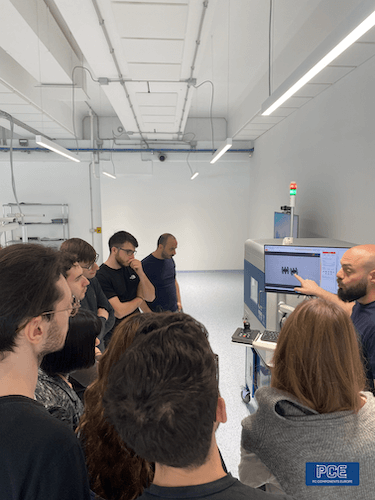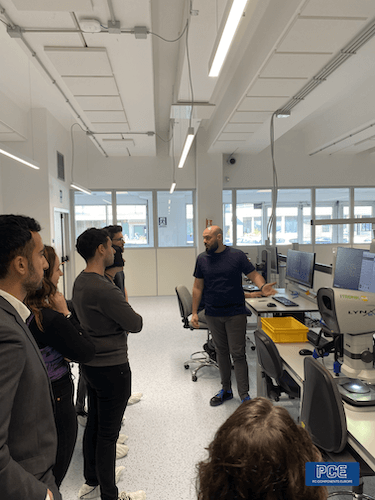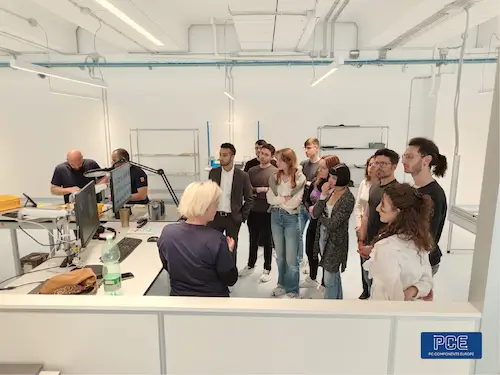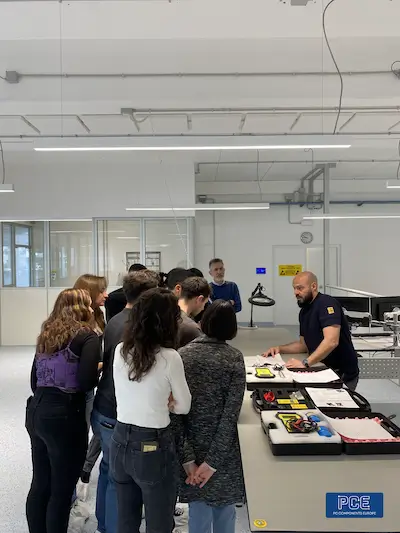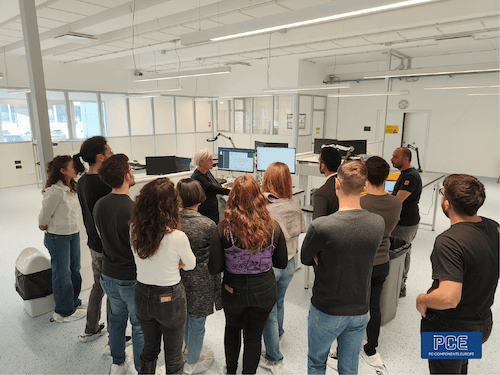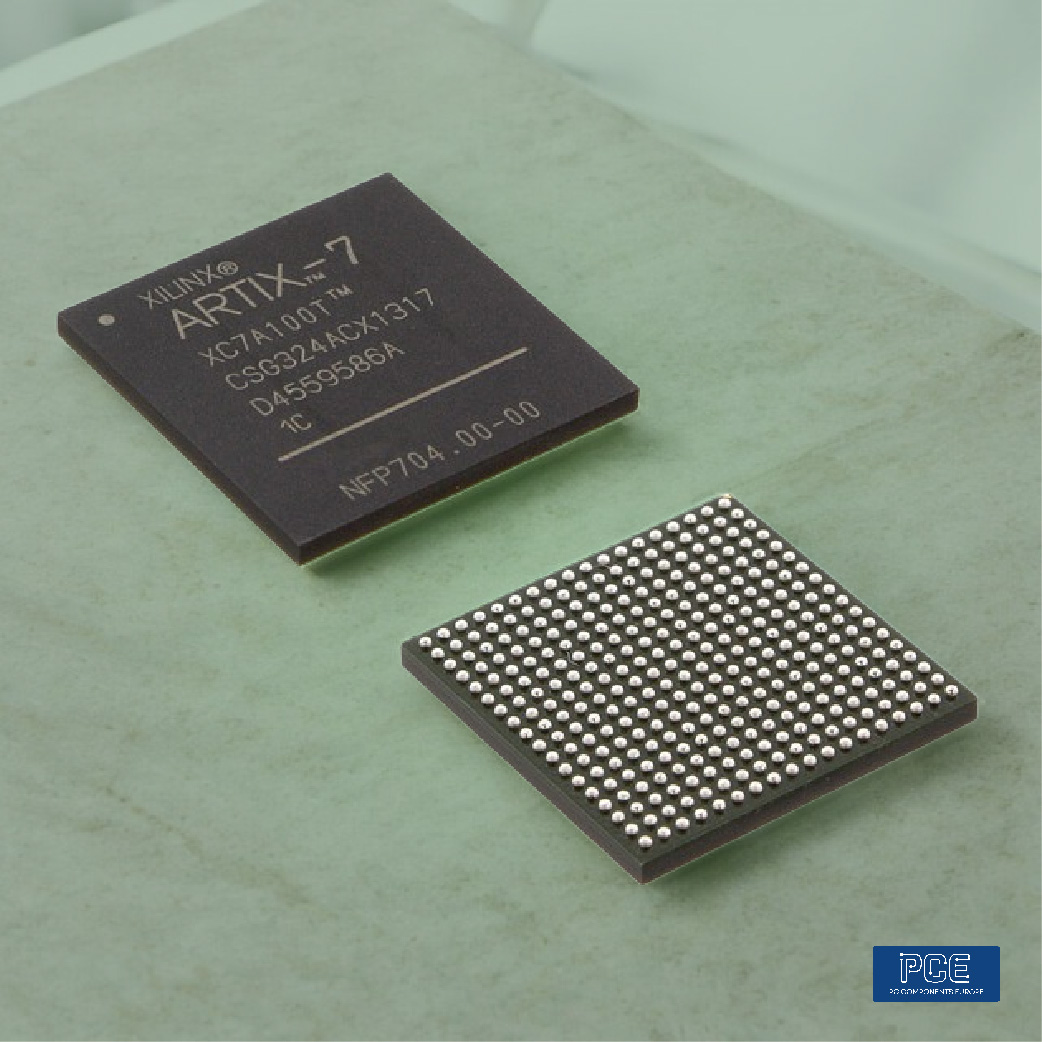Today we are happy to share with you news about the University of Tor Vergata ! Last month, on April 18, PCE hosted more than 20 students from the University of Tor Vergata, specializing in electronics. Our new structure, located in Via Orazio Raimondo, 47, borders this very important university in Rome. Together with Prof. Marcello Salmeri of the Department of Electronic Engineering, PCE and Tor Vergata are collaborating effectively. Prof. Salmeri specifically teaches Electrical and Electronic Measurements.
The following PCE IDEA Certified Inspectors were present and provided a demonstration for Tor Vergata University students:
The objective was to show the students how their field of study can be applied in the labor market
We accompanied the students through our quality control procedures, sharing our knowledge. We also focused on explaining ESD measurements and requirements for the lab, explaining how to handle parts correctly and safely. Our ESD control program allowed us to achieve this goal. This ESD program has been developed to comply with ANSI/ESD S20.20-2021 requirements.
What is the ESD Program?
The ESD Control Program, or Electrostatic Discharge Control Program, is a set of procedures and protocols designed to prevent damage to sensitive electronic components caused by electrostatic discharge (ESD). ESD occurs when two objects with different electrical potentials come into contact, resulting in a sudden flow of electricity between them. This discharge can damage electronic devices, particularly those with integrated circuits or other sensitive components. The ESD Control Program typically includes:
- Providing education and training to personnel on ESD awareness, prevention, and handling procedures.
- Establishing methods to ensure that ESD control measures are being implemented effectively and following standards.
- Implementing grounding systems to ensure that personnel, equipment, and surfaces are at the same electrical potential to prevent ESD.
- Designating specific areas where sensitive electronic components are handled, stored, or processed. EPAs are equipped with measures to minimize static electricity buildup and discharge.
- Using appropriate packaging materials and techniques to protect electronic components from ESD during transportation and storage.
- Clearly identifying ESD-sensitive components and materials with appropriate labels or markings.
- Maintaining records of training, audits, inspections, equipment calibration, and any ESD damage or non-compliance incidents.
“The ESD Control Program aims to mitigate the risk of ESD-related failures in electronic devices, ensuring product quality, reliability, and performance.” PC Components Europe.
We are grateful for the visit from the Tor Vergata University to our PCE quality department. We look forward to having you back in our headquarters!

